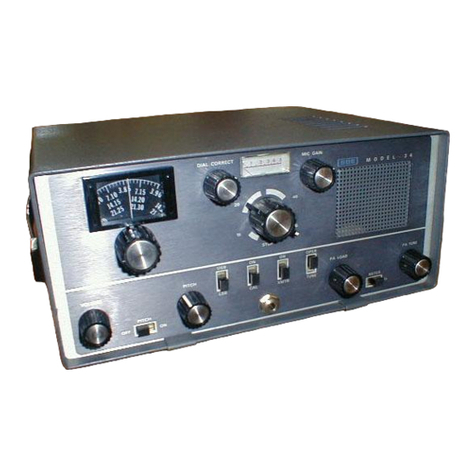SBE SB-36 OPERATION MANUAL
Table of Contents
1.0 INTRODUCTION...........................................................................................................................5
1.1 GENERAL.....................................................................................................................................5
1.2 SPECIFICATIONS.......................................................................................................................5
1.2.1..................................................................................................................................General
.....................................................................................................................................................5
1.2.2............................................................................................................................Transmitter
.....................................................................................................................................................6
2.0 INSTALLATION............................................................................................................................7
2.1 GENERAL.....................................................................................................................................7
2.2 FIXED STATION...........................................................................................................................7
2.3 ANTENNAS..................................................................................................................................7
2.4 LINEAR AMPLIFIER.....................................................................................................................7
3.0 OPERATION.................................................................................................................................8
3.1 OPERATING INSTRUCTIONS.....................................................................................................8
3.1.1.............................................................................................................................................8
4.0 OPERATING PROCEDURE.......................................................................................................14
WARNING:........................................................................................................................................14
4.1 RECEIVER OPERATION...........................................................................................................14
4. 2 TRANSMIT TUNING PROCEDURE..........................................................................................14
4. 3 CW OPERATION.......................................................................................................................15
5. 0 THEORY OF OPERATION........................................................................................................17
5. 1 GENERAL..................................................................................................................................17
5.1.1...........................................................................................................................................17
5. 2 TRANSMITTER CIRCUITRY.....................................................................................................18
5.2.1.........................................................................................................Transmitter Signal Path
...................................................................................................................................................18
5.2.2......................................................................................................Automatic Level Control
...................................................................................................................................................19
5. 3 RECEIVER CIRCUITRY.............................................................................................................19
5.3.1.............................................................................................................Receiver Signal Path
...................................................................................................................................................19
5.3.2........................................................................................................................Noise Blanker
...................................................................................................................................................20
5.3.3........................................................................................................Automatic Gain Control
...................................................................................................................................................20
5.3.4.........................................................................................................................VOX Keying
...................................................................................................................................................21
5.3.5..................................................................................................Frequency Mixing Network
...................................................................................................................................................21
5.3.5.1................................................................................................................Carrier Oscillator
...................................................................................................................................................22
5.3.5.2...................................................................................................................VFO Oscillator
...................................................................................................................................................22
5.3.5.3.................................................................................................High Frequency Oscillator
...................................................................................................................................................23
5.3.5.4 Side Tone Oscillator.....................................................................................................23
5.3.6..................................................................................................................................Counter
...................................................................................................................................................24
5.3.7........................................................................................................................Power Supply
...................................................................................................................................................25
NoobowSystems Lab. Tomioka, Japan 2003 http://www.noobowsystems.com/ Page 4 / 56





























